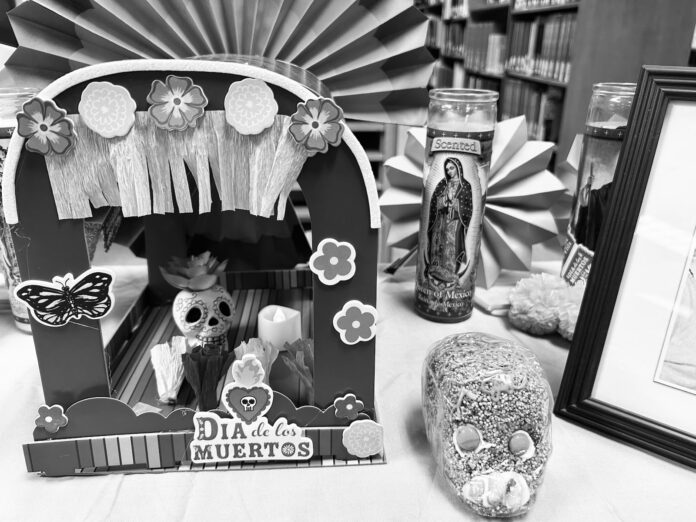Just as quick as the season has begun, it now comes to an end with Halloween on Tuesday, Oct. 31 and Wednesday, Nov. 1 marking the Catholic feast of All Souls’ Day. Even though October didn’t quite feel like a “fall wonderland” this year due to the temperature consistently wavering between 70 and 80 degrees, the spooky season still flourished throughout Dallas.
Multiple campuswide activities popped up dedicated to sharing the fun of Halloween with students, such as the pumpkin carving event, pumpkin painting event, Halloween TGIT and the RHA Halloween party down in the Rat. It seems as if the holiday fever has everyone in its chokehold amidst the humid weather, causing students to happily bring out their fall sweaters while sipping on Cap Bar pumpkin spice lattes.
Though Halloween is in its prime, another famous holiday is happening in tandem – Day of the Dead or “Día de los Muertos” in Spanish. This holiday is a celebration originating from Mexico dedicated to prayer and remembrance of the dead. Día de los Muertos, though most commonly observed in Mexico, is widely celebrated in the American Southwest by Mexican immigrants from Nov. 1-2.
Traditionally, families create “ofrendas,” which are offering places, and decorate them with marigold flowers and pictures. These altars are meant to be a gateway between the living and the dead and allow the souls of loved ones to visit their families once more. Another popular tradition is to dress up as skeletons with a major icon of Día de los Muertos being the “calavera,” or “skull.”
While many call Halloween in America nothing more than a consumerism-based holiday, Día de los Muertos is a celebration with rich cultural roots that can genuinely be enjoyed by everyone – Mexican or not. As for the history and celebration of Día de los Muertos in Texas, it’s recorded that back in the 1870s in south Texas, people celebrated by cleaning the graves of loved ones.
In the article “Día de los Muertos” by the news group Texas Co-Op Power, they note that it wasn’t actually until the 1970s where common traditions such as creating ofrendas, burning copal incense or making pan de muertos and sugar skulls were actually commonly practiced.
Soon these Día de los Muertos festivities began to spread from the Rio Grande Valley in south Texas, all the way to Northern Texas and the DFW area. Texas Co-Op Power writes about the scope of these gatherings: “The city of Tyler hosted its first public Day of the Dead celebration in 2016. The 2017 Denison festival and parade, featuring large skeleton marionettes, will be the town’s seventh annual event. Funds raised through the Día de los Muertos Celebration of Life at West Texas A&M University in Canyon go to scholarships. Denton’s lively reunion of the living and the dead has grown to include coffin races since its debut in 2011. The Museum of South Texas History in Edinburg exhibits altars made by residents and maintains an archive of images and stories.”
Ranging from Fort Worth to Denton, the DFW area is stocked with city-wide Día de los Muertos activities for young and old to enjoy. At the Arts Mission Oak Cliff in our very own city of Dallas, there will be a community ofrenda for all to enjoy, taking place on Nov. 2. In the opposite direction in Fort Worth on Main Street, there will be a city wide fiesta at Artes de la Rosa Cultural Center for the Arts at the Rose Marine Theater on Nov. 5 dedicated to Día de los Muertos. For those with a more artistic side, Dallas’ Bath House Cultural Center’s 37th annual Day of the Dead exhibition will be going on until Nov. 4, with over 70 different art pieces present.
Now knowing about all of the amazing Día de los Muertos events happening, make sure to try and stop by one of them! Texas’ Hispanic and Latino culture is something that makes this state special. Going to celebrations dedicated to appreciating these cultures is deeply important. Now, eat all of that Halloween candy, change out of that costume and try to get off of campus and experience the colorful festivals dedicated to Día de los Muertos.
